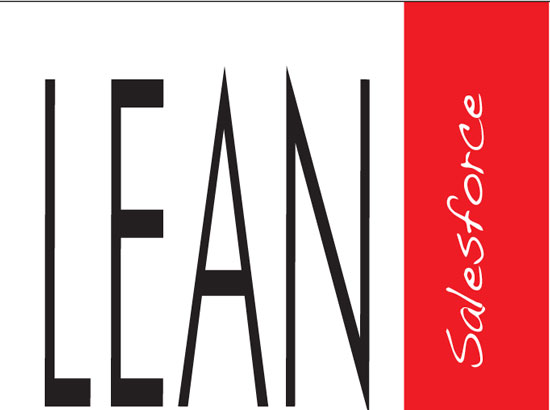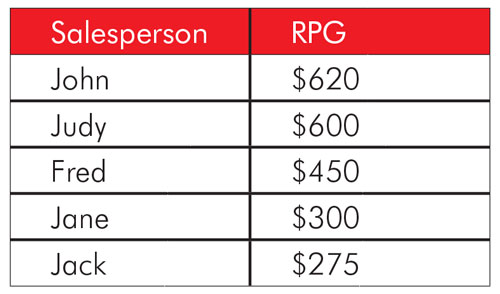
Consider two stores: Store A and Store B. They are in the same region and belong to the same corporation. They have the same store layout, share the same marketing program, and have the same number of salespeople. They are separated by 15 miles on the outer ring road of a mid-sized US city. You would think their performance would be similar, right?
Store B however, always, without fail, outperforms Store A in terms of revenue and gross margin percent. Furthermore, Store B always has fewer customer service issues. How is this possible?
Could it be that Store B is just getting better customer traffic and Store A is getting a bunch of “tire-kickers”? Not likely. Maybe Store B is located in a better market area? Not in this case.
The likely answer for the performance difference is basic: Store B is LEANER than Store A.
In the case of Store A vs. Store B, B is LEANER because it is more efficient. LEAN is the process of continually improving efficiency and effectiveness. It is not about making broad cuts. If that were the case, Store B would be leaner because it had less expenses or fewer people. LEAN is about identifying and trimming weakness, as well as building upon strengths. That is why Store B outperforms Store A. Store B has a sales force that is better at Engaging, Communicating, and Delivering what their customers need. They are more professional.
Even though Store B is LEANER than Store A, there may be competitive stores in the same trading area that are even leaner. That’s why Store B can’t rest on its laurels. A LEAN sales force continues to improve itself. If it doesn’t, it will stop growing sales.
Every furniture store needs a strategy for implementing LEAN and applying it to their sales teams. Here are the steps to take to implement LEAN sales force management:
- Establish benchmarks based on performance metrics
- Measure performance using 80/20 thinking
- Find solutions
- Execute to conclusion
- Continue improving
Sales metrics rate a salesperson’s effectiveness. Sales volume produced is a crucial metric to track, but it does not tell the story about how you got there. Sales metrics should be established around the sales production equation: Average sale x close rate x number of customers.
I recommend picking a primary metric that your sales force will focus on improving. For this article, I’ll suggest you choose Revenue per Guest (RPG). This is the value of each customer visit in terms of sales dollars. RPG is easy to calculate providing you have good systems in place to track your numbers. With RPG, you divide sales revenue by the number of customers. You should do this for each salesperson. This will allow you to know your average and set a benchmark for improvement.
Measure Performance Using 80/20 Thinking
After you have a core metric in place, it is time to use it to improve. There is no value in just tracking a metric without taking further action. The first action to take is measurement using the 80/20 principle. 80/20 thinking is at the core of implementing a LEAN sales force. It says the majority of results are produced by the minority of sources. So, in the example of the metric RPG, the principle dictates that the minority of salespeople are probably producing the majority of revenue per guest. You may find that in our operation the number isn’t exactly 20% of the people producing 80% of sales per guest. The important thing is to know who is producing a consistently high RPG and who is pulling the averages down. Once you have this information, you have the power to develop a plan to improve.
Find Solutions
Now that you have your metric (RPG in this case) established and you are tracking results, you implement LEAN by defining solutions to improve the metric. Consider the results shown in the chart below for sales associates in one store over a 3-month period:

In this example, John and Judy produce the majority of results for this performance metric. Fred is average, and Jane and Jack are pulling the team down. John and Judy together would in fact produce over 100% more sales dollars than Jane and Jack for every customer they deal with. Knowing this, you can learn from what John and Judy are doing better than the rest of the team.
Making small improvements in the right areas can have sizable impact. For example, from this information you may set an overall strategy on improving the minimum RPG standard to $400. From there, specific tactical actions can be put into play.
Examples include:
- Re-train in the custom-order selling process
- Improve the customer qualifying process
- Work on the customer solution close
Execute to Conclusion
Once you put your LEAN strategy in motion, follow through. Consistent action gets results. Repetition of the right actions leads to the right results. Managers should demonstrate proven best practices over and over again until they are adopted by the sales force. If positive results are not realized in a specific time frame, the actions taken, the manager’s ability to execute, or the salespersons ability to progress should be questioned. More often than not, a solid plan combined with people who have the right attitudes and commitment will produce results.
Continue Improving
Congratulations! You’ve improved your metric and your business. You have become more competitive in your marketplace. This is not the end of the LEAN process, however, because LEAN never ends. It is continuous. From a sales force perspective, suppose you have achieved your strategy of reaching a minimum RPU of $400 - now what? The answer is simple, keep on improving that metric, or look for a new metric to improve.
Here are 10 other examples of worthy sales metrics to focus on to begin a LEAN strategy:
- Average gross margin dollars/ sale.
- Percent of house calls or design sales.
- Average sale.
- Close rate on new customers.
- Percent of repeat customer visits (be-backs).
- Percent of sales with add-ons.
- Warranty as a percent of total sales.
- Percent of sales with customer issues.
- Sales to goal achievement.
- Quotes converted/ quotes written/ month.
Caution: these metrics are all good in their own right, but don’t focus on them all equally at the same time. Focus your LEAN strategy on one, or at the most three metrics at a time. There will be less distraction and confusion, and you will have a greater chance of success.
Whatever you decide to do, the path to success is to keep your focus on what matters. Keep tweaking the strategy and follow the never-ending road toward maximizing sales using LEAN.